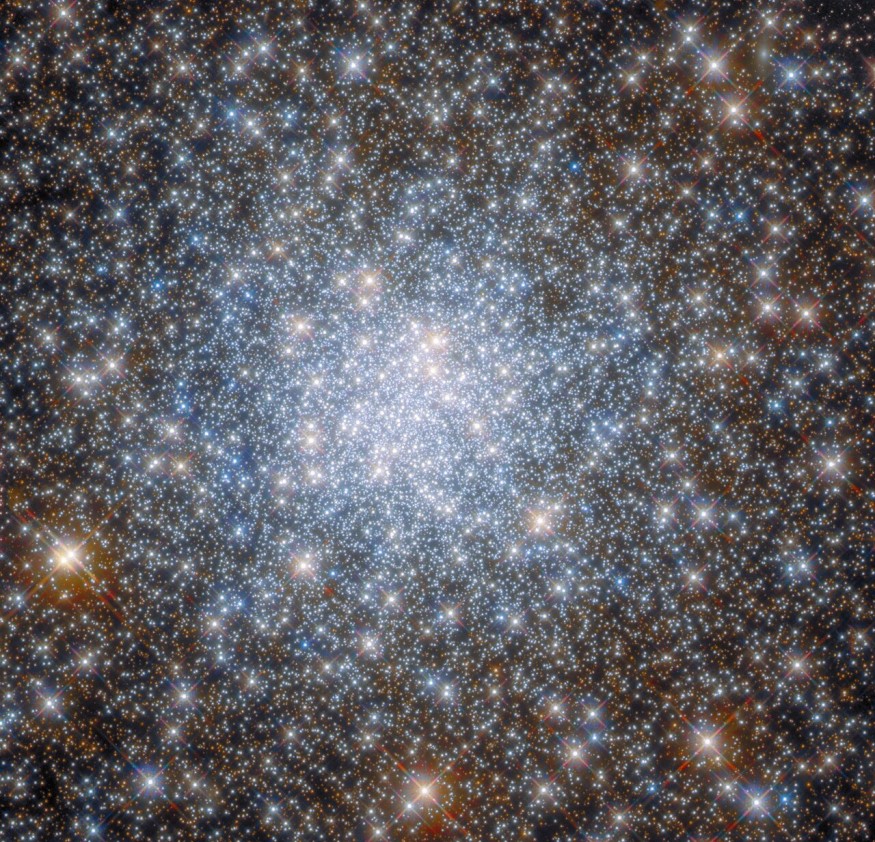The Hubble Space Telescope, co-managed by the National Aeronautics and Space Administration and the European Space Agency (NASA/ESA), has snapped a stunning photo in the center of a globular cluster of stars in the constellation Sagittarius.
A large cluster of tens of thousands or possibly millions of stars firmly connected by gravity and closely clustered together is depicted in the image as a globular cluster.
NASA/ESA Hubble Space Telescope Takes Photo of Globular Cluster in Constellation Saggitarius
The most recent Hubble picture and video captured by the telescope's Wide Field Camera 3 and Advanced Camera for Surveys were made public by both NASA and ESA.
It displays the globular cluster NGC 6638, densely packed with hundreds of thousands or millions of old stars in a spherical form.
All types of galaxies share a globular cluster. According to the Astrophysics webpage of Georgia State University, there are 150 identified globular clusters in the Milky Way galaxy.
Before the creation of Hubble, the ESA stated that it was practically hard to properly discern the stars in globular clusters with ground-based telescopes.
Due to the Earth's atmosphere's tendency to blur, it was previously challenging to tell one star from another. However, this problem is no longer present because of Hubble's location in low Earth orbit.
Digital Trends mentioned that a different instrument will soon be used to study globular clusters, since Messier 92, one of these clusters, is the focus of an early-science project employing the James Webb Space Telescope.

ALSO READ : NASA Released the Latest Cartwheel Galaxy Image Captured by the James Webb Space Telescope
Difference Between Hubble, James Webb Space Telescope
Hubble Space Telescope and James Webb Space Telescope are the two most famous observatories.
Hubble and Webb, according to NASA, are incredibly different. Webb will primarily view the universe in the infrared, which is the fundamental distinction between them. Hubble, on the other hand, focuses mainly on optical and ultraviolet wavelengths while studying the universe.
You might be wondering why paying attention to infrared light is crucial. Notably, distant objects undergo more redshifting, which causes their light to move from the UV and optical spectra towards the near-infrared. Therefore, according to NASA, an infrared telescope is necessary to observe these far-off objects.
NASA said that although Hubble's significant capabilities are in the ultraviolet and visible (0.1 to 0.8 micron) parts of the spectrum, its sensors can also view a tiny portion of the infrared (0.8 to 2.5 micron) range.
Another difference between the two telescopes is the size of the mirrors. The mirror on Hubble is smaller than the one on Webb, owing to Webb's larger light-collecting area, which allows it to look deeper into the past than Hubble.
While Hubble is in an orbit that is very near to the planet, Webb will be 1.5 million kilometers away.
To further explain, the Hubble Space Telescope orbits the globe at around 570 kilometers. Webb, on the other hand, will be 1.5 million kilometers away at the Earth-Sun L2 Lagrange point and not really orbit the Earth.
RELATED ARTICLE : NASA Shares Largest-Ever Photo Captured by Hubble Space Telescope Featuring the Andromeda Galaxy
Check out more news and information on Space in Science Times.
© 2025 ScienceTimes.com All rights reserved. Do not reproduce without permission. The window to the world of Science Times.












